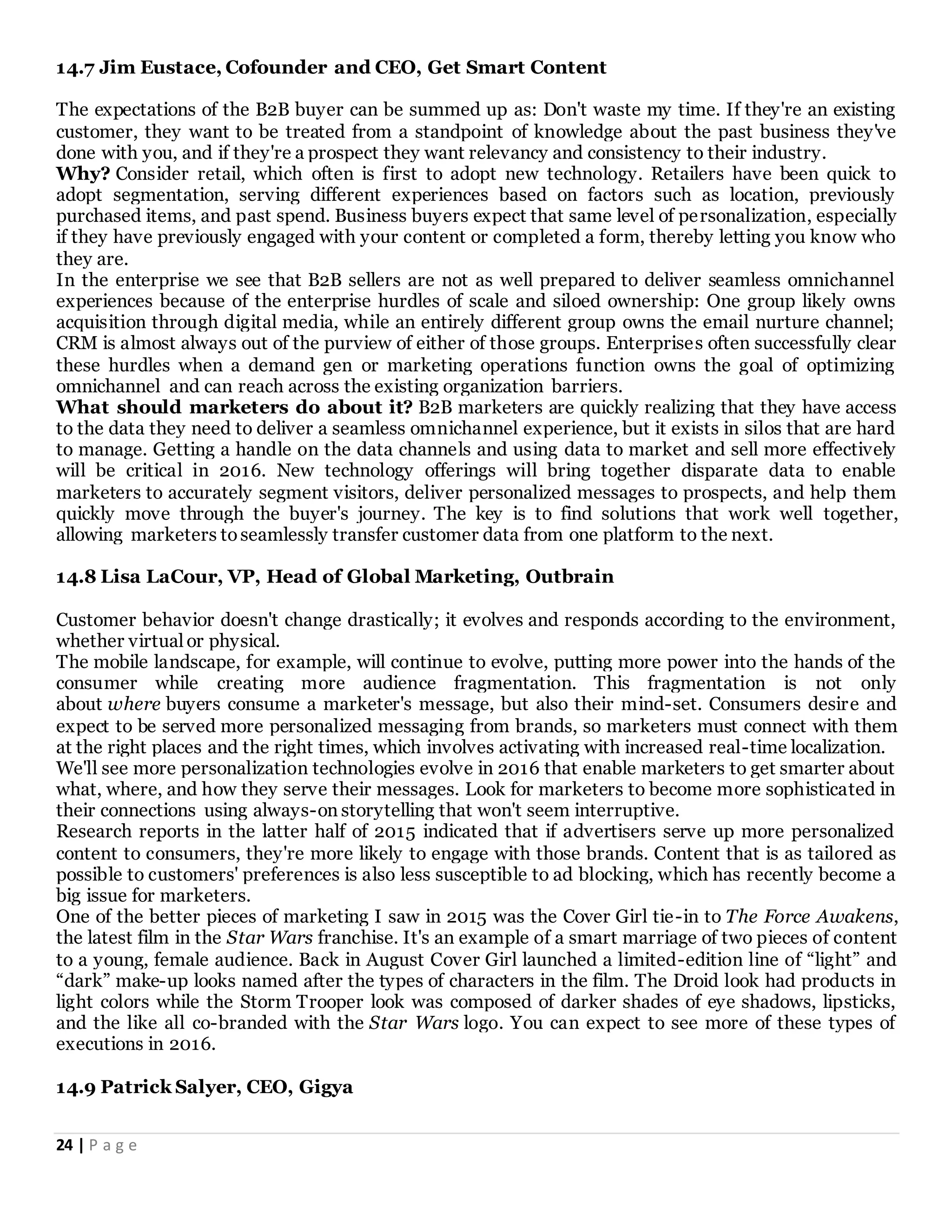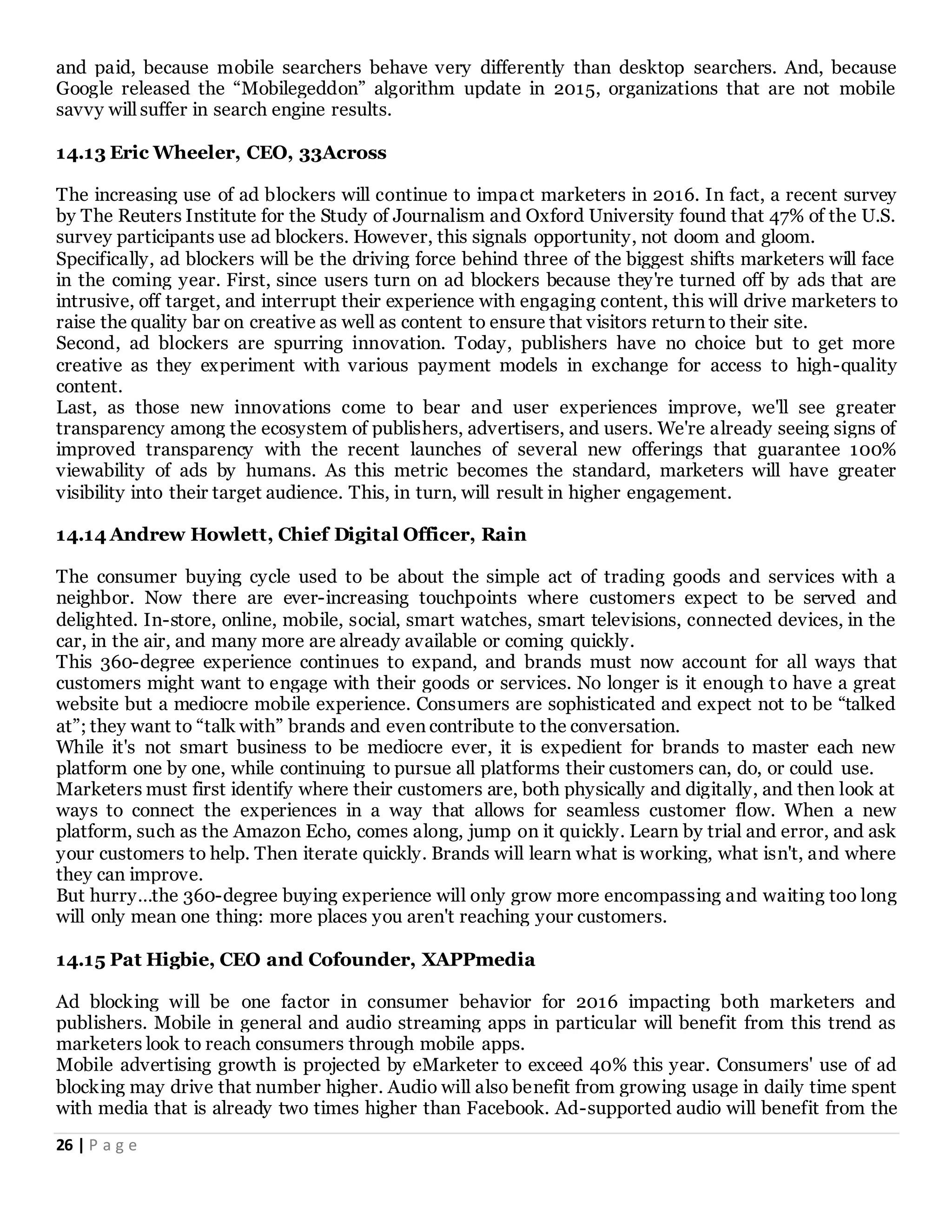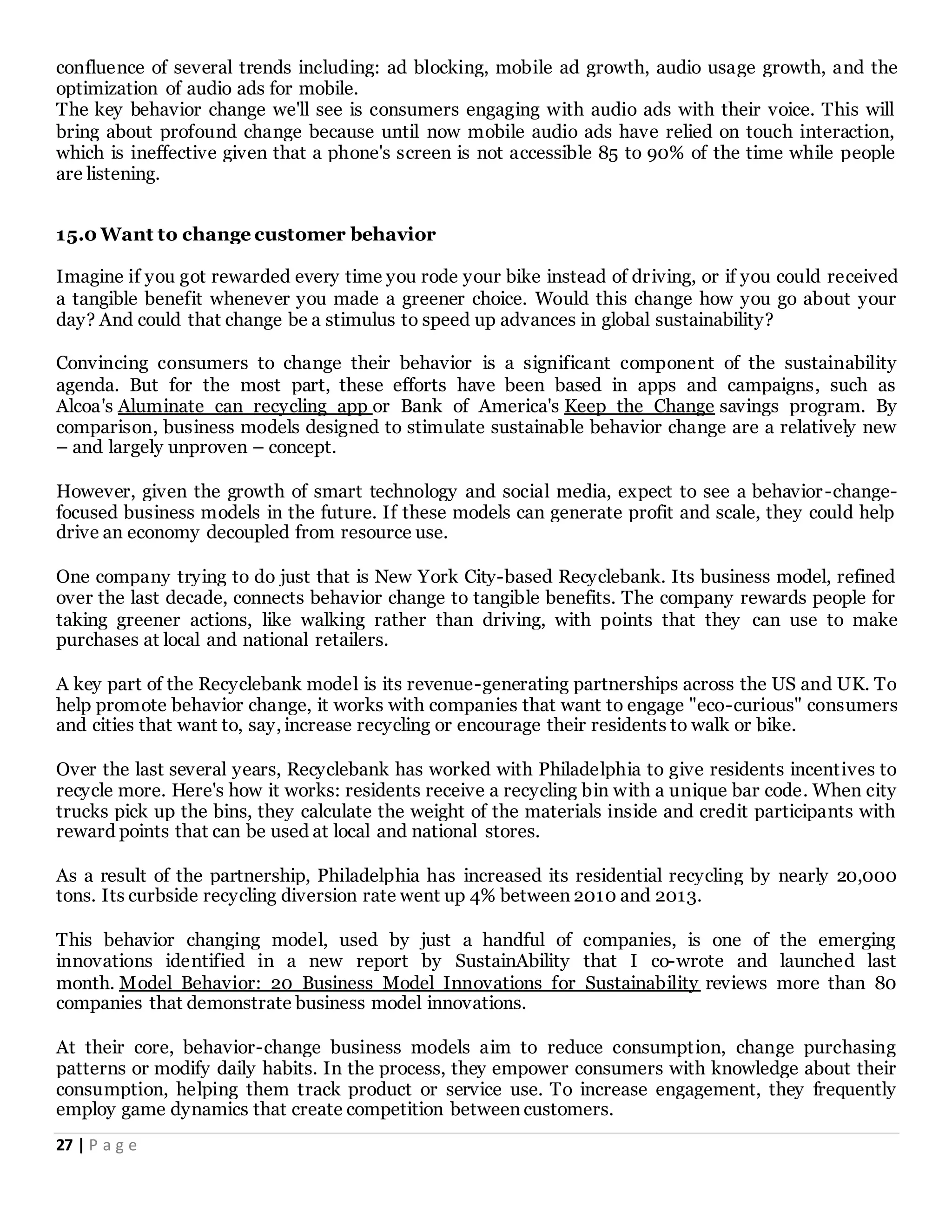This document provides an overview of research conducted on customer buying behavior. It begins with an acknowledgement of the faculty member who oversaw the research project. It then includes a table of contents outlining the various sections of the report. The sections cover topics such as the different types of customer buying behavior, who constitutes a customer, how to study consumer behavior, factors that influence consumer behavior including cultural, social, and personal factors. Maslow's hierarchy of needs is also discussed along with the consumer buying process and how technology is changing consumer behavior in the digital age.
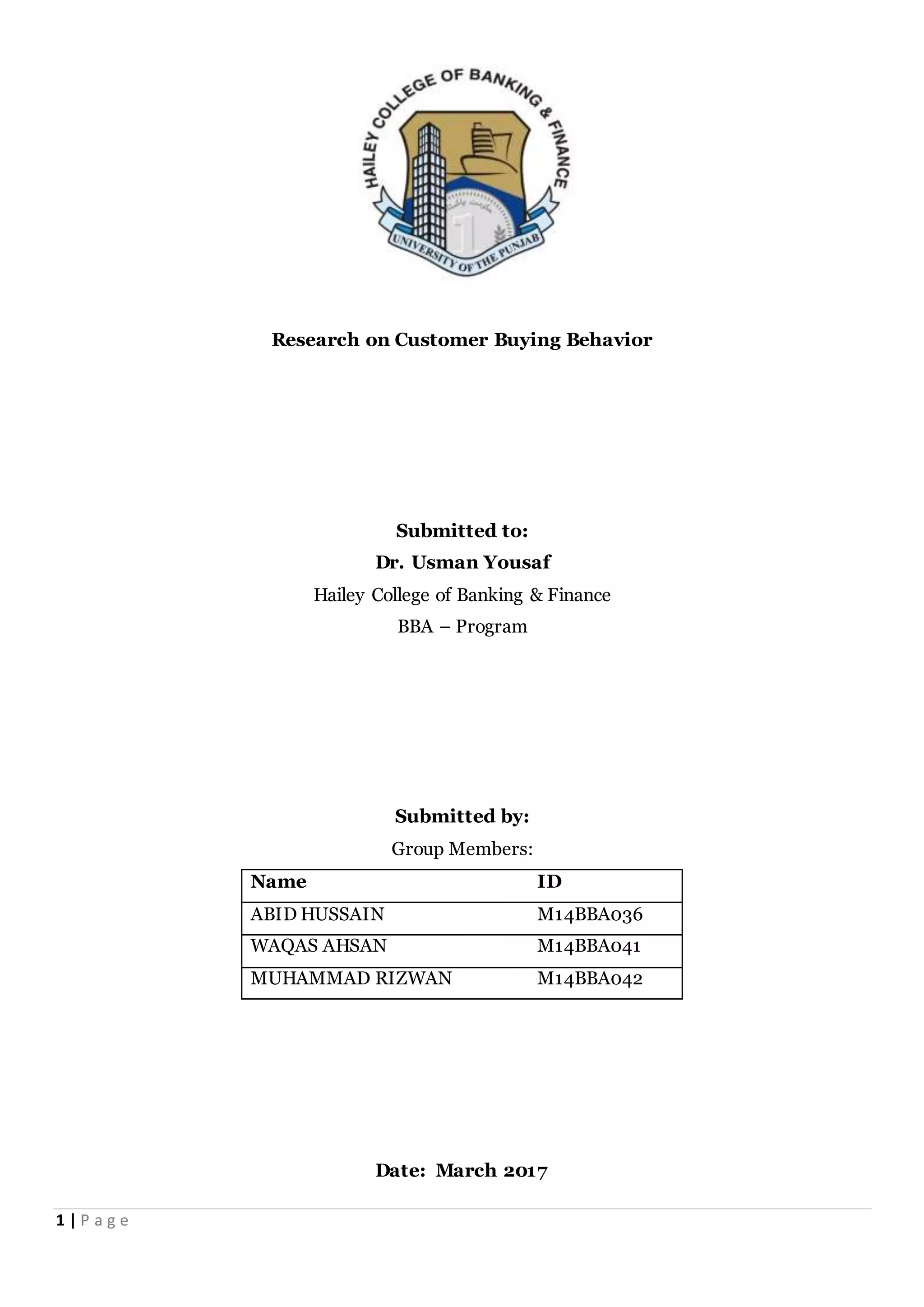
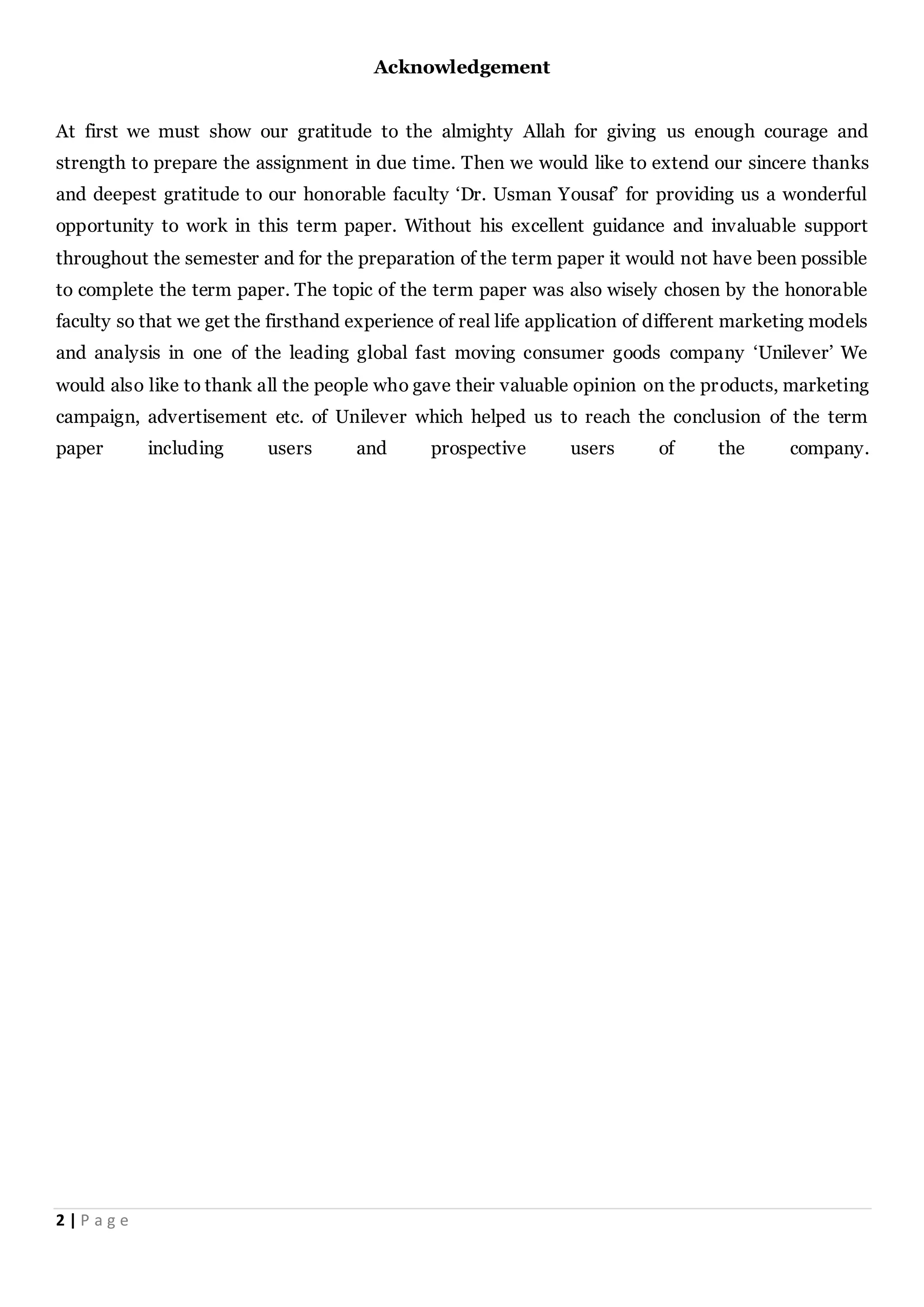
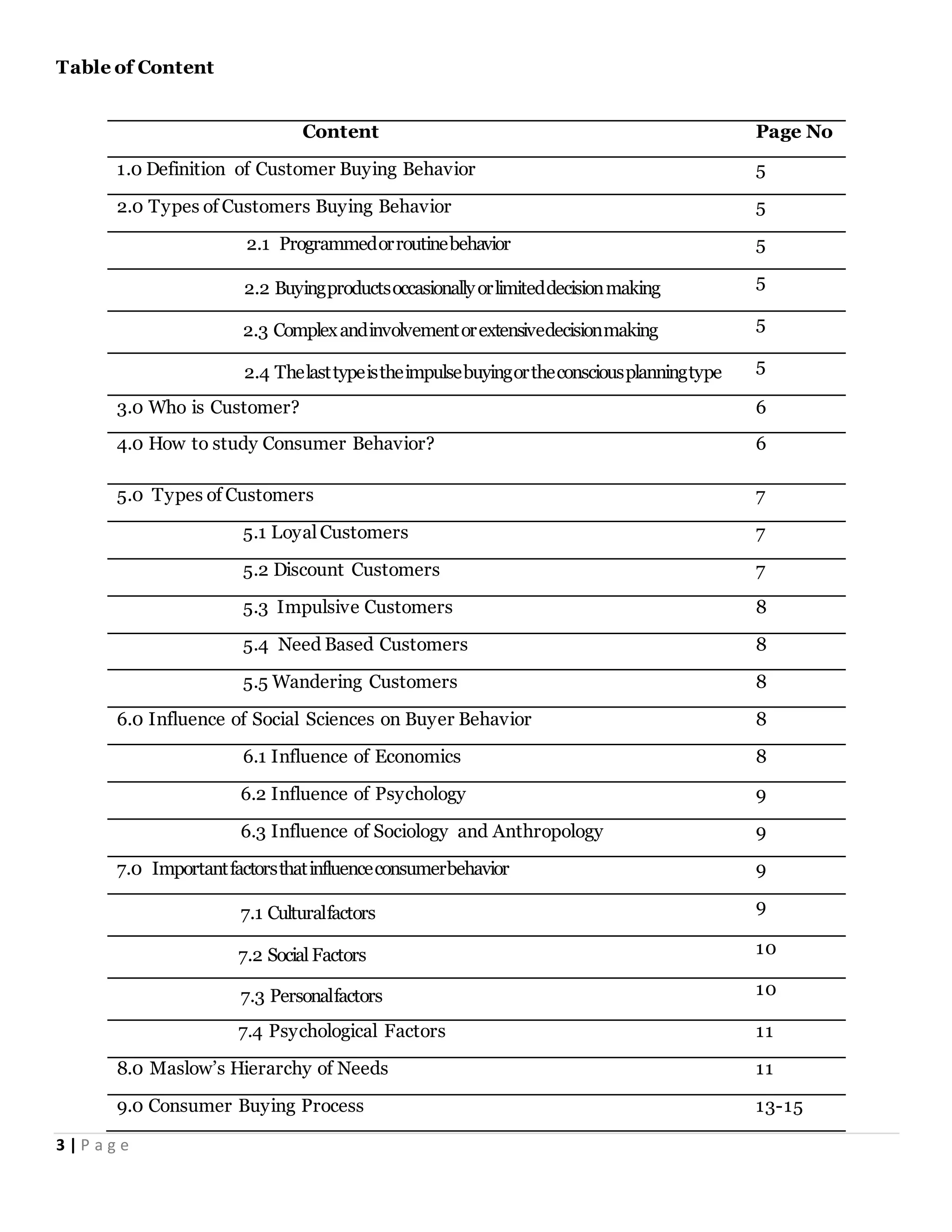
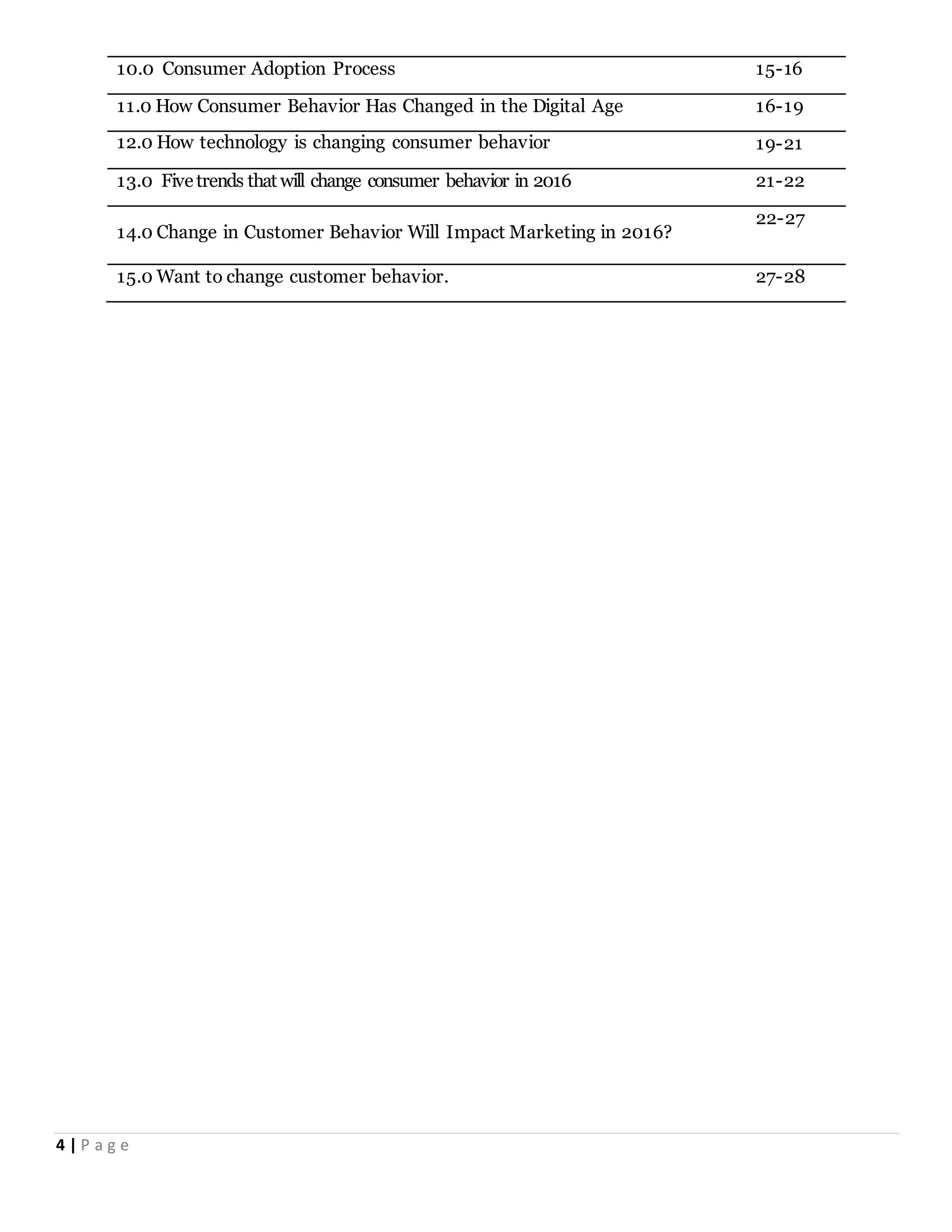
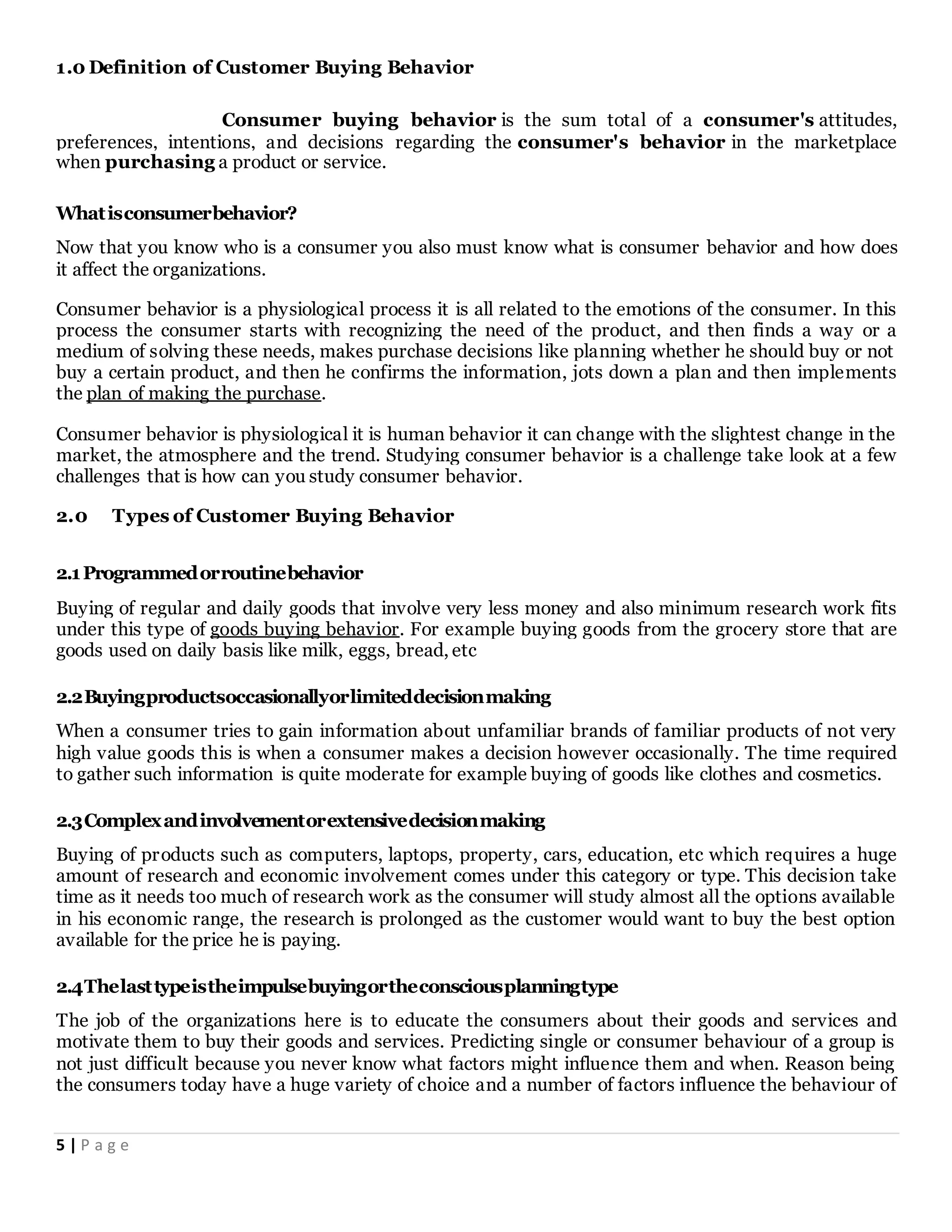
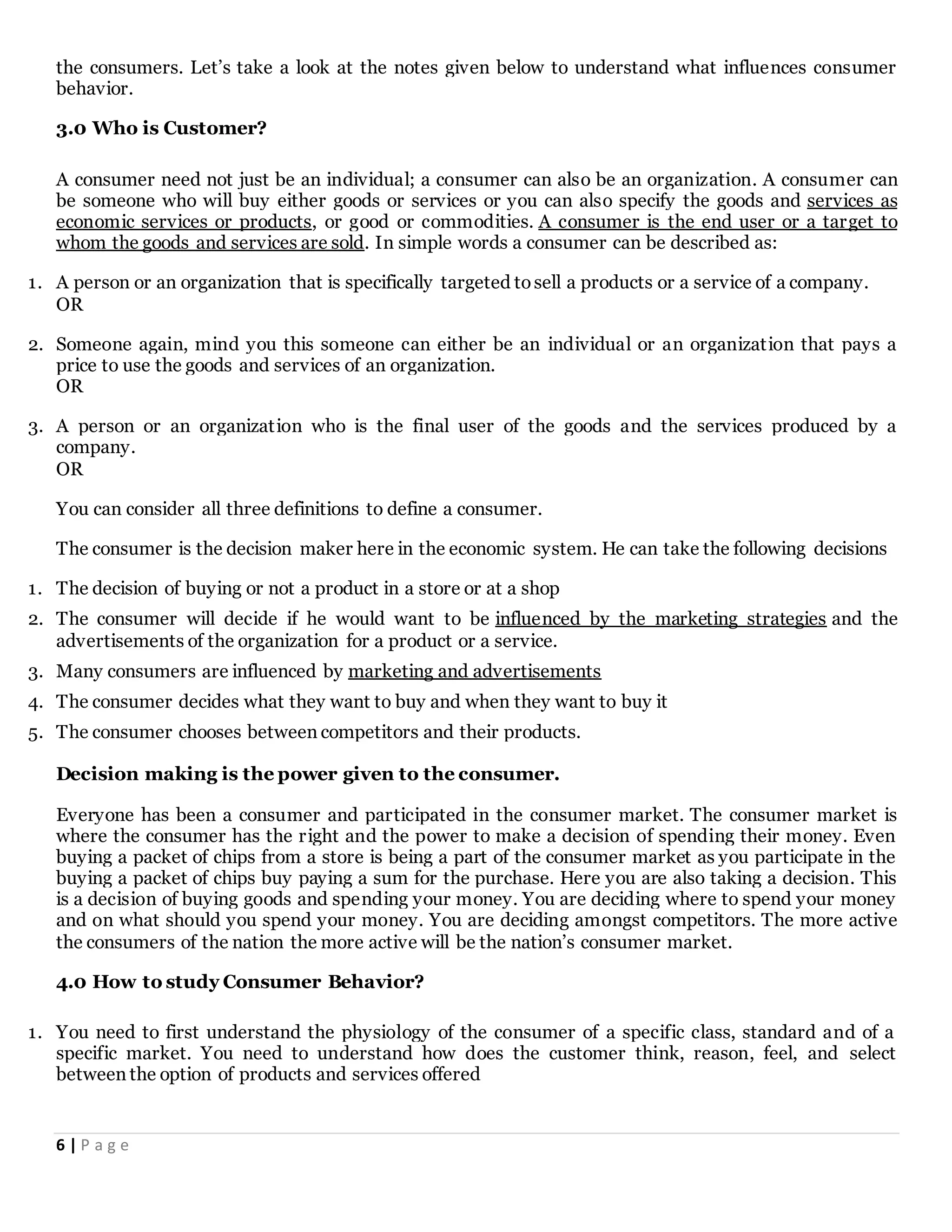

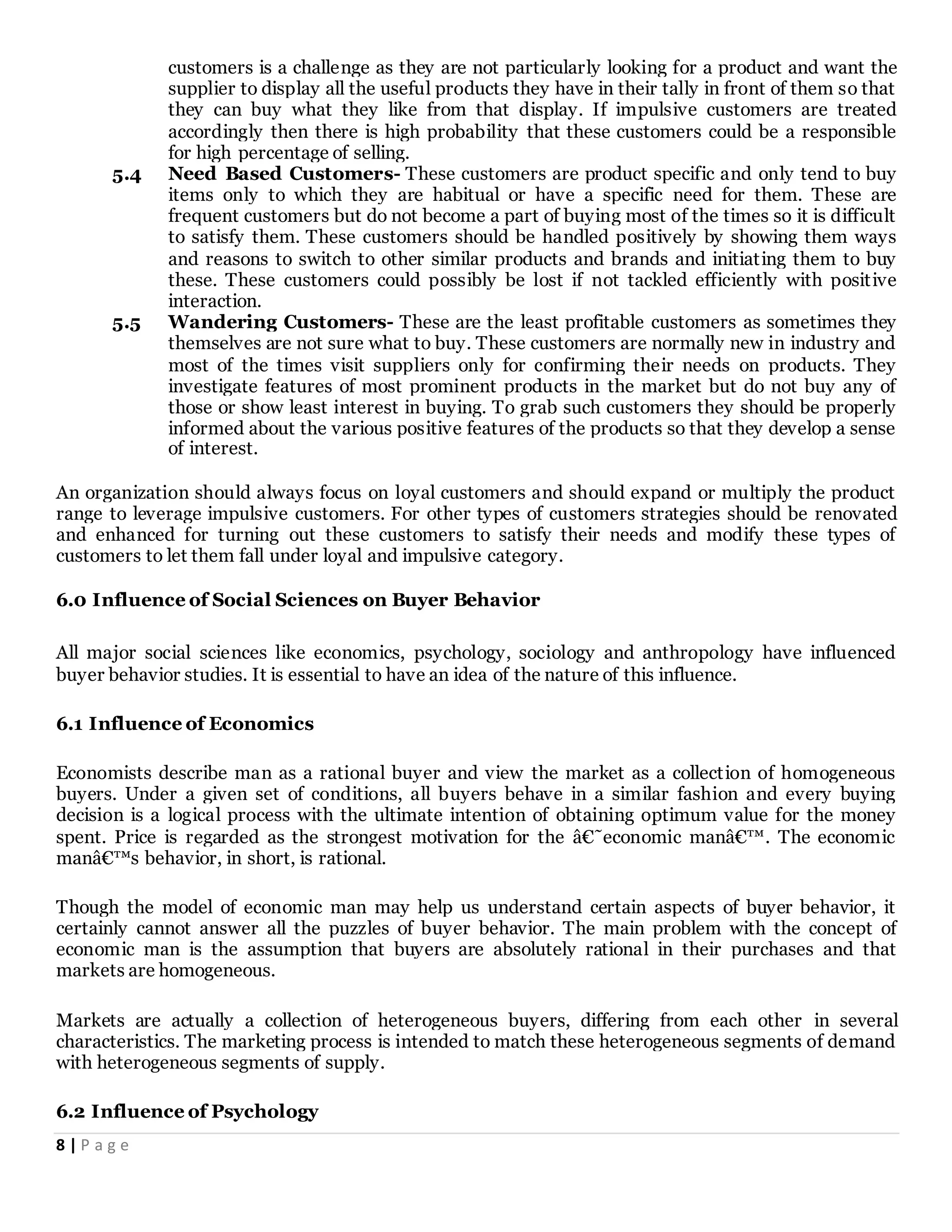
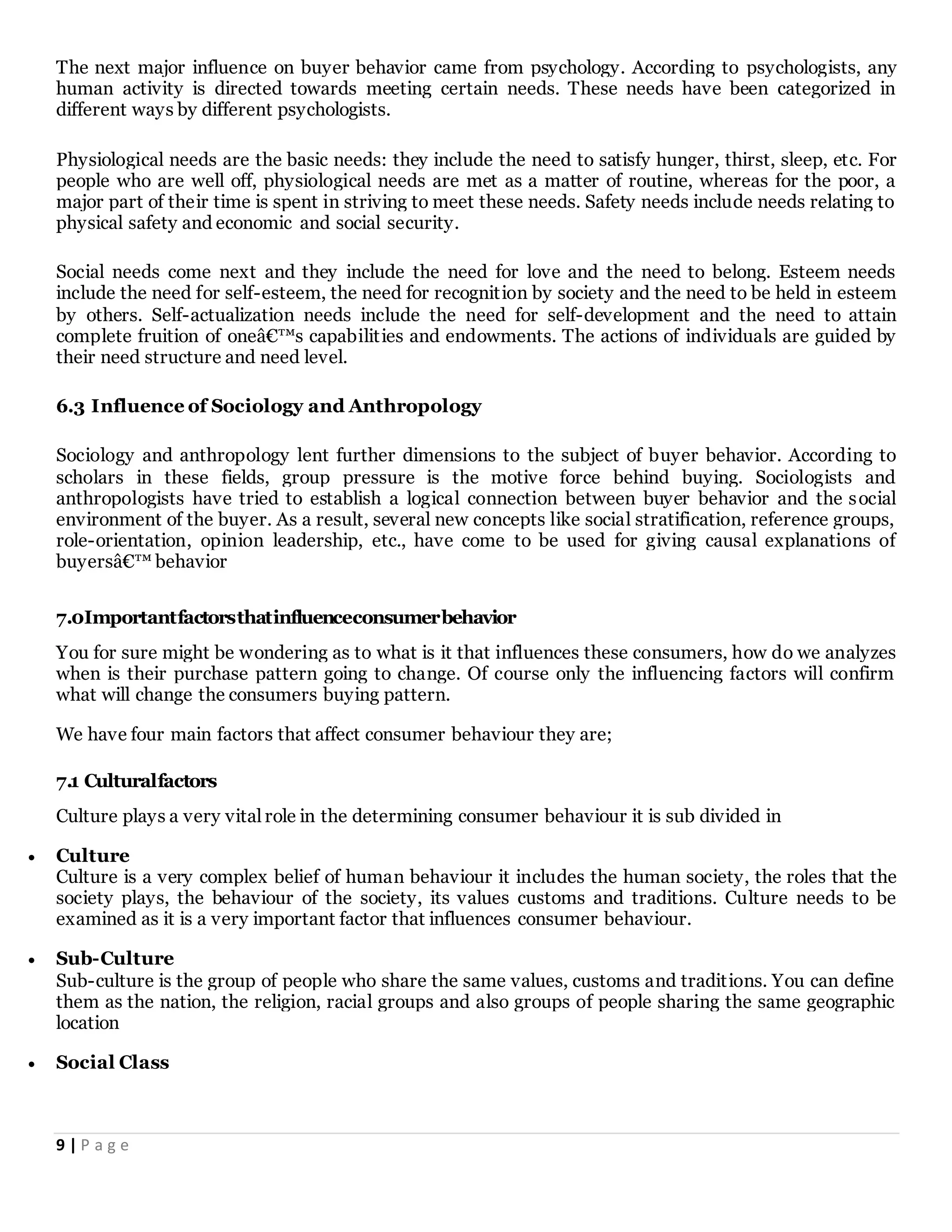
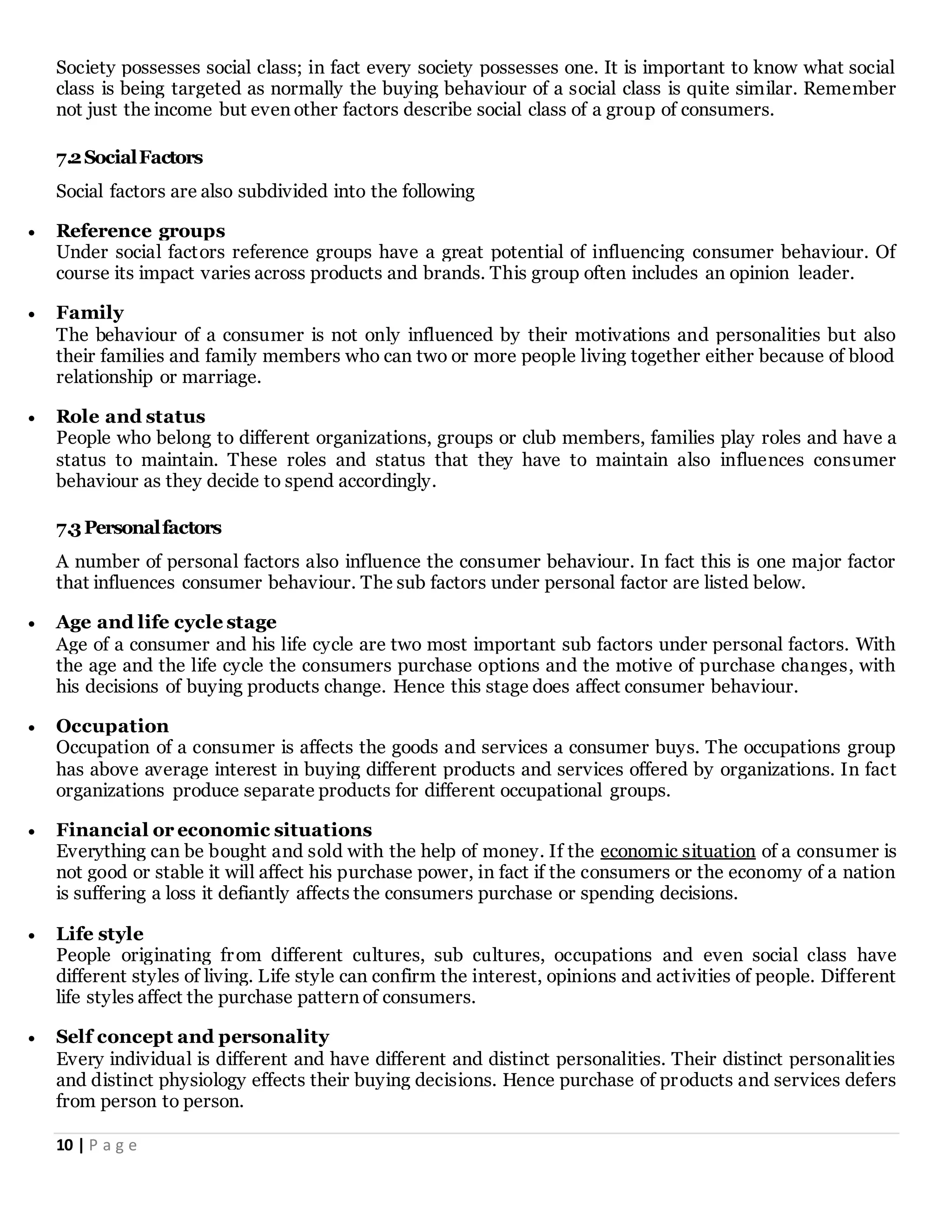
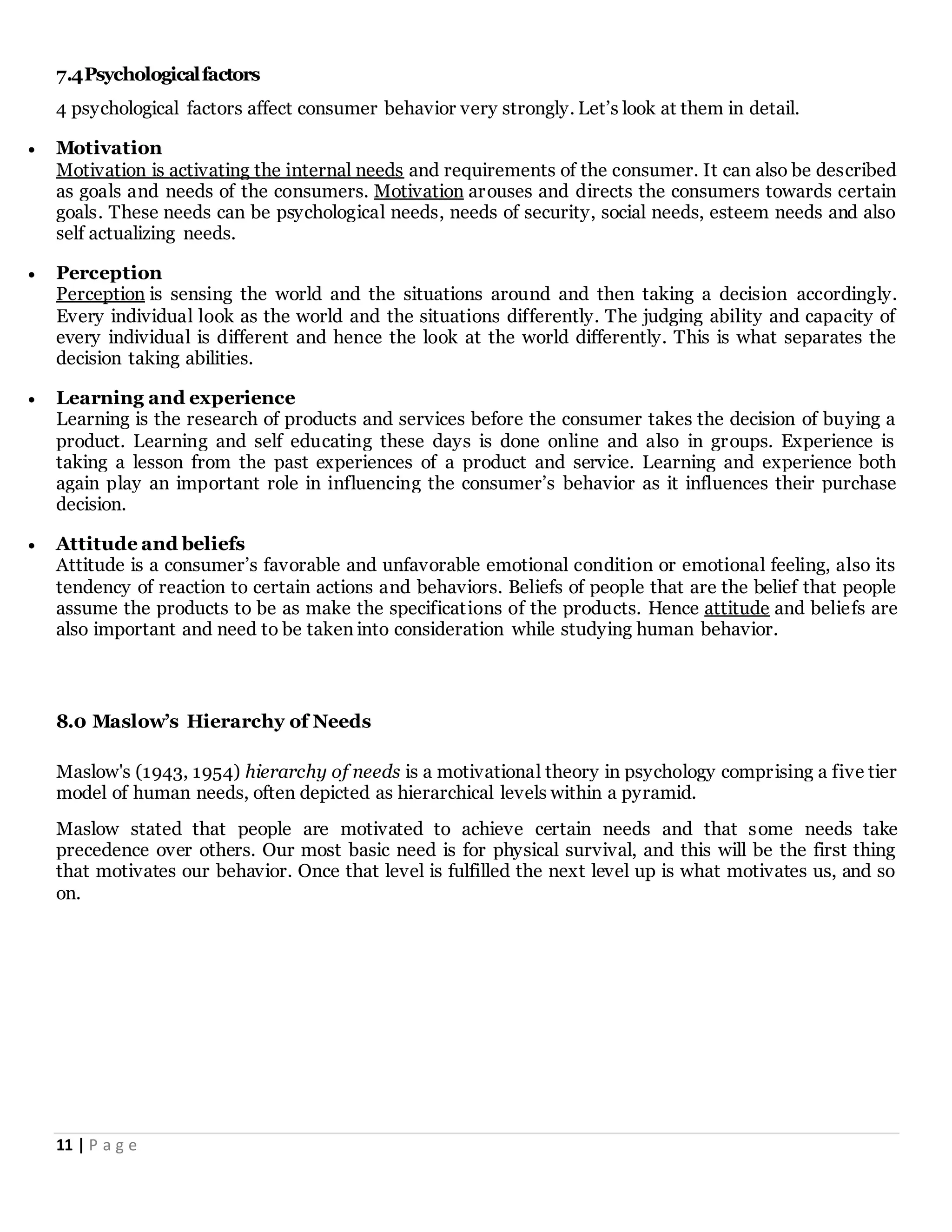
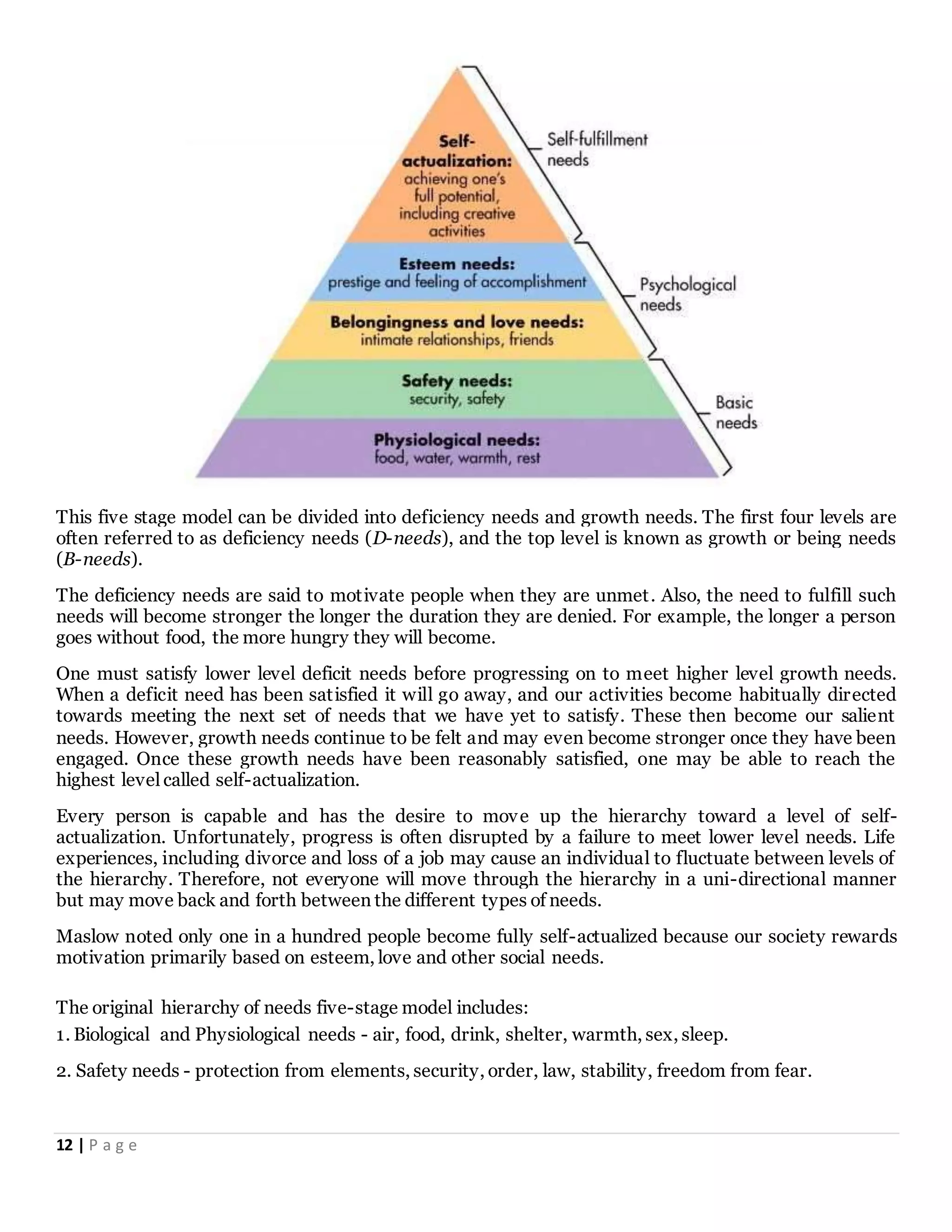
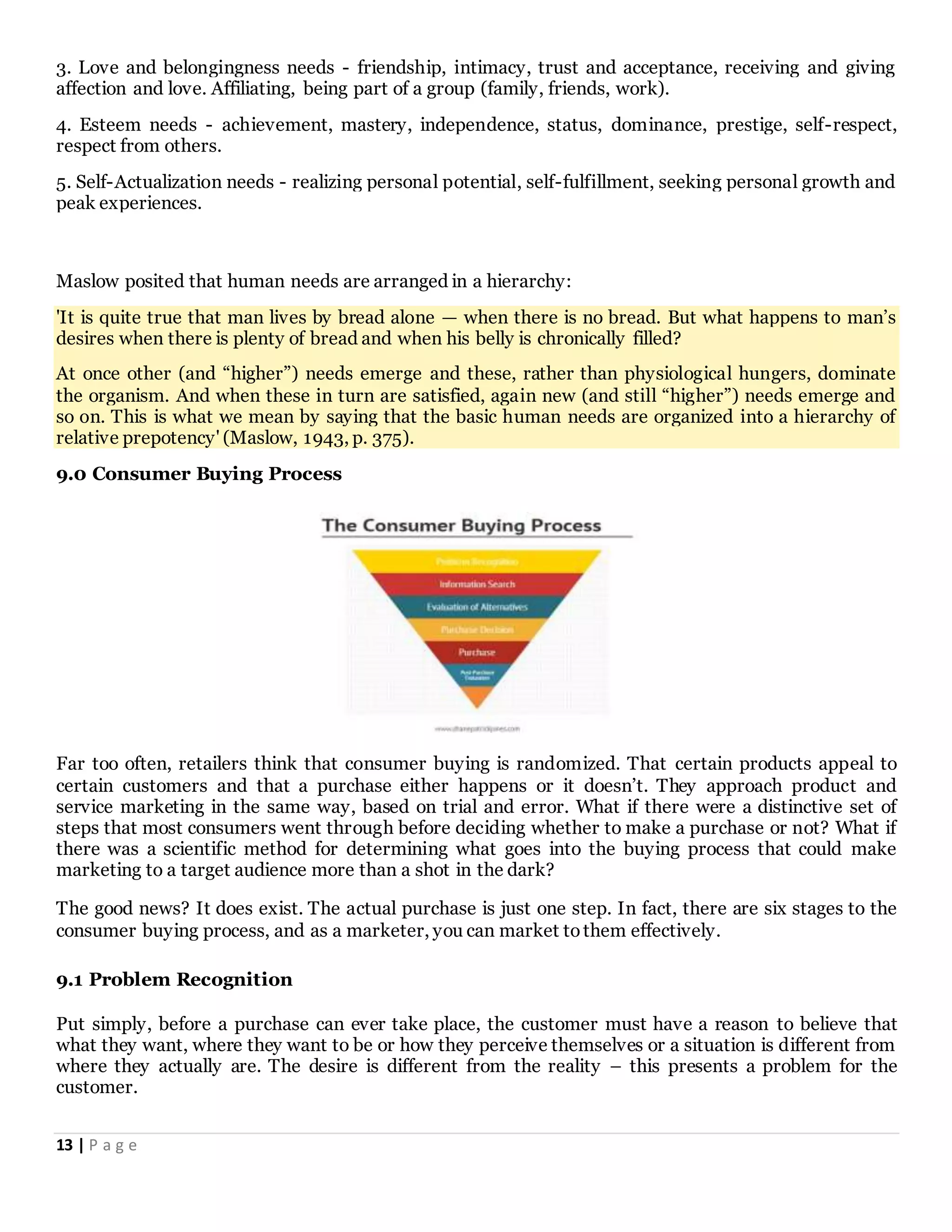

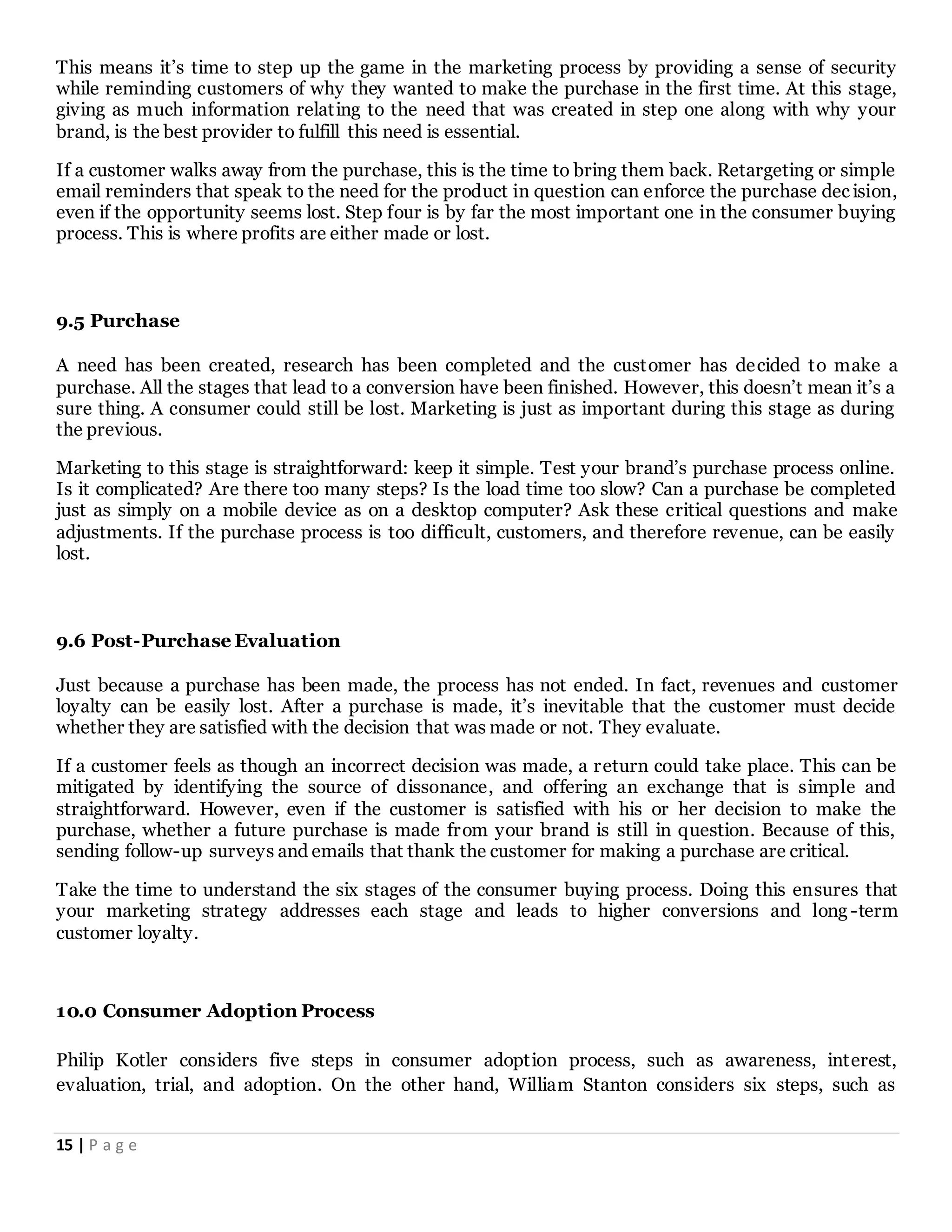

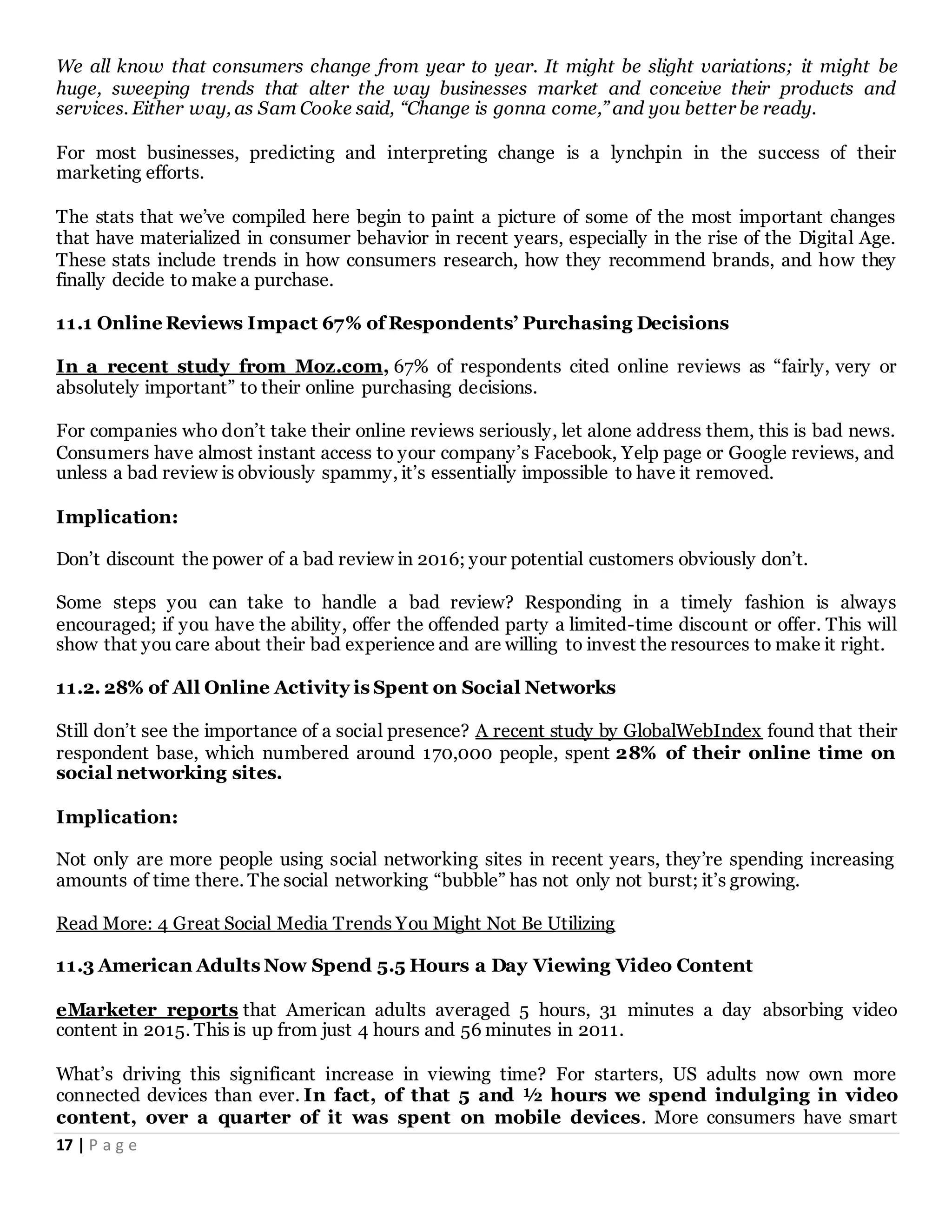
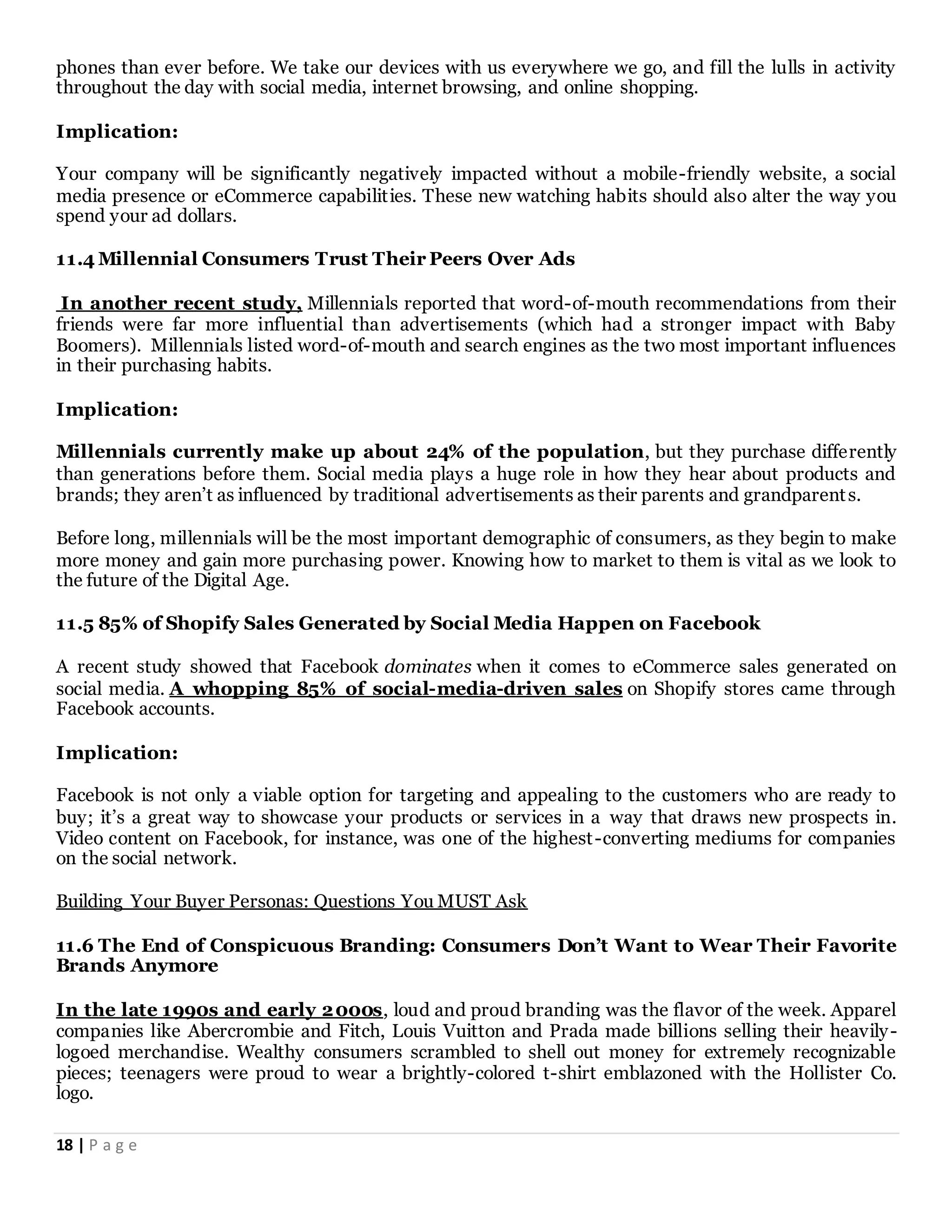
![19 | P a g e
Fast forward to 2016, and conspicuous branding is a signifier of retrograde marketing and outdated
attitudes about consumption and display of wealth.
Modern consumers have shown a clear preference for more understated and subtle products and
merchandise, which has left previously logo-heavy companies scrambling to assimilate their output to
modern tastes.
Implication:
Your style of branding has a huge impact on how consumers perceive and remain loyal to your
company. Flexibility in your branding is vital to staying relevant as consumer opinions and tastes
change.
Consumer behavior in the digital age is an ever-changing and ever-expanding anomaly. Staying in
tune with consumer behaviors, tastes, and impending trends can help your brand stay relevant, visible
and engaging for your customer base and prospects.
12.0 How technology is changing consumer behavior
The venture capitalist Marc Andreessen once said that software is eating the world. You don’t have to
look very far to see that in action. The ubiquity of smartphones and social networking apps, for
example, has transformed how people keep in touch with family and friends. Amazon and other e-
commerce sites have revolutionized shopping. Even in health care, digital technology has already
started changing how consumers choose service providers.
The pace of change today is the slowest it’ll ever be. As a business executive, you need to keep your
pulse on emerging trends to avoid disappointing customers and falling behind competitors.
If you’re wondering which tech trends are quickly becoming a reality, here are four technologies that
are already shaping consumer behavior—and what they mean for your business.
12.1 Smart devices offer consumers convenience and peace of mind
Connected devices stole the show at the 2017 Consumer Electronics Show (CES). From smart fridges
to voice-activated trash cans, companies showed off futuristic gadgets that promise to make smart
homes a reality.
The connected device market is ready to take off, but how can companies stand out? According to
Carley Knobloch, technical consultant at HGTV Smart Home, companies should focus on customer
needs.
“Consumers are voting again and again [through their purchases] for devices that offer peace of mind
and anticipate their needs,” Knobloch explains to MediaVillage.
A recent study from Scripps Networks Interactive provides some clues on what consumers may be
looking for and who the early adopters are. The research was conducted in the company’s insight
community, Scripps Under One Roof, and found that safety and energy efficiency are two strong
motivations behind smart home device purchases. For example, 75 percent of consumers said they
bought a smart device to help keep their family safe and comfortable. Millennials, according to the
study, are more likely to adopt smart home technology compared to Gen Xers and Boomers.](https://image.slidesharecdn.com/researchassignment-170405055751/75/ABID-HUSSAIN-SINDHU-HCBF-Research-on-Customer-Behavior-19-2048.jpg)
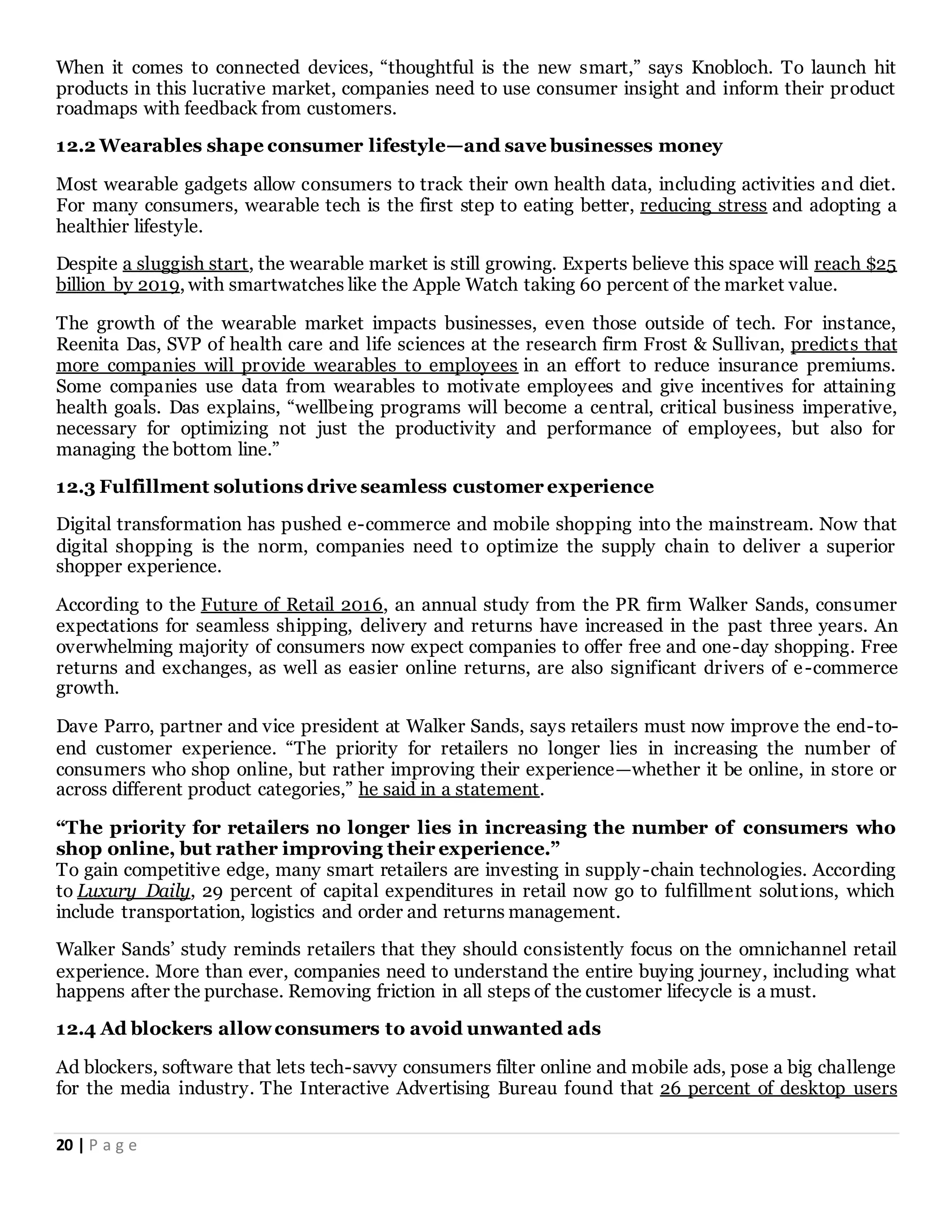

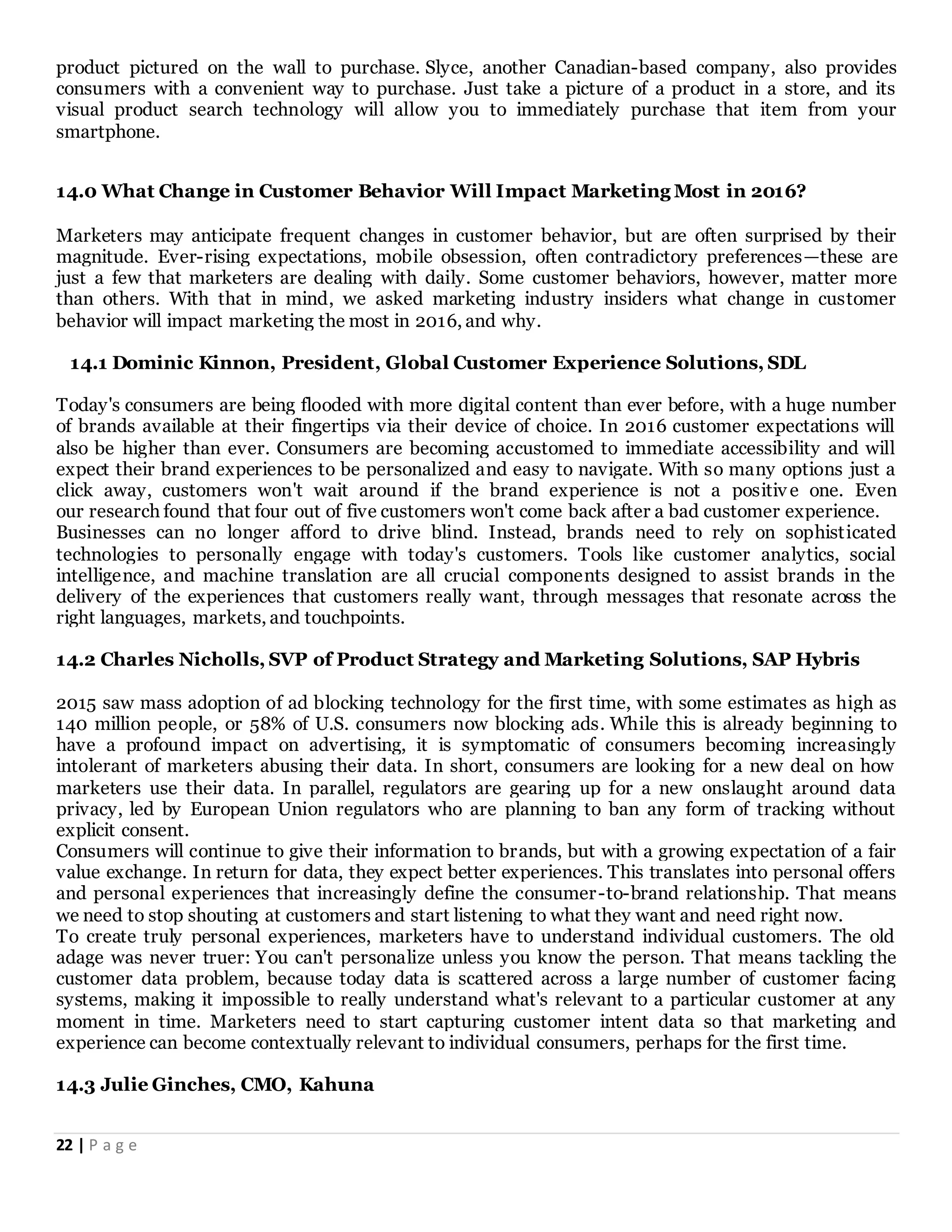
![23 | P a g e
In 2016 consumers will fully understand the power they have to unsubscribe and disengage. As
brands begin to realize that marketing is a privilege instead of a right, marketers will have an added
urgency to improve their efforts at personalization or risk being excommunicated. The winning
brands will focus their efforts increasingly on providing personalized, contextual messages that are
driven by data.
We can also expect that marketing will be less about a quick sell and more about building a long -term
relationship. It will be less about immediate sales conversions and more about brand loyalty and long-
term value. Chubbies is a men's apparel brand that's already excelling in this capacity by interacting
with their customers less as a brand and more as a friend. Their communications range from a
touchpoint like a random joke, to something a little more traditional like an alert that something is on
sale.
Further, brands will stop making their customers fit their specific mold and instead learn their
preferences to communicate offerings and deals specific to each individual's needs. This will drive
meaningful interactions and conversions rather than a meaningless onslaught of content.
14.4 Jon Gold, Director, Web Strategy and Design, Blackboard
The biggest change in customer behavior is that customers expect a consistent and personalized
experience— despite their increased engagement with brands across various channels. This was the
case in 2015, but we can expect it to be even more so in 2016. Brands should not only keep the variety
of channels and the expectation for individualized experiences in mind, but also the fact that
customers are increasingly global; they don't only live in your backyard—they're across geographic
borders, speaking various languages with unique cultural nuances. At Blackboard, we [aim] to meet
these digital and global demands by delivering a mobile responsive website and effectively targeting
specific customer personas.
14.5 Bill Muller, CMO, Visual IQ
From mobile phones and tablets to laptops and desktops, today's consumers are using an ever-
increasing number of devices to access the Web, search for information, make purchases, and more.
Even if a brand isn't running campaigns across devices, consumer responses are still being harvested
in greater numbers across multiple device types.
As m-commerce continues to grow in 2016, expect marketers to look for solutions that enhance their
understanding of their marketing's true impact across all channels and devices, as well as how to best
allocate their spend by device to meet their goals. By deduplicating unique users who are exposed to
marketing touchpoints across multiple devices, these solutions will provide marketers with a more
holistic view of their consumers' paths to conversion, and the ability to more effectively allocate their
budget by device type.
14.6 Mayur Anadkat, VP of Product Marketing, Five9
In recent years we've seen customers' expectations grow rapidly as they seek simple and instant 360-
degree support. Customer expectations will only continue to evolve, forcing marketers to keep the
customer experience as top priority.
In 2016 marketers need to collaborate with technology departments to create synergy between
customer relationship management and the technology behind it to improve a brand's voice through
better customer service. By getting behind the right customer relationship management technology,
marketers will be able to keep up with their customers' rising standards.](https://image.slidesharecdn.com/researchassignment-170405055751/75/ABID-HUSSAIN-SINDHU-HCBF-Research-on-Customer-Behavior-23-2048.jpg)
